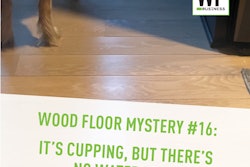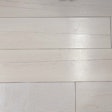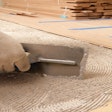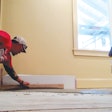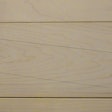
As predictable as the sun setting in the west, winter is when wood flooring pros get calls about gaps. Here are some facts you should know; the more you know, the better you can prevent the calls.
Normal gaps
The good news is that usually the gaps are what the industry refers to as “normal gaps,” which have three characteristics:
1) They close back up in the summer with typical seasonal swings in relative humidity.
2) They are uniformly distributed throughout the floor.
3) They are approximately the same size and proportional with board width.
Such gaps are considered a non-issue, and a wood flooring inspector should not find fault with such a floor.
RELATED: How to Prevent Wood Floor Gaps in Winter
What affects gap size
There are many factors that affect how big a normal gap might be. Key among them:
1) Species: Some wood floor species may end up with larger gaps based on their shrink/swell factor. Beech is notorious for being widely variable in dimension, so it will get bigger gaps than, for example, red oak.
2) Cut of the wood: Quartersawn and riftsawn flooring will shrink up to 33% less than plainsawn flooring.
3) Interior environment: The less controlled the interior environment, the bigger the changes. If lizard people live in the house with the temperature at 80 degrees in winter, there’s going to be very substantial shrinkage of the wood no matter how it was installed.
What affects gap appearance
Some things don’t actually change the size of the gap but do affect how objectionable the gap may appear to the customer.
1) Color: The lighter the color, the more visible the gapping. So if you have a maple or birch floor, the same gaps appear to be larger than they would in a walnut or ipé floor.
2) Staining: If you stain a lighter species dark, sometimes the floor will shrink enough to reveal the lighter color on the tongues. To avoid this, some installers use a Sharpie on the tops of the tongues (that’s a problem only if the customer decides to have the floor refinished in a lighter color at a later time).
3) Overall aesthetic: Gaps are expected and even integral in floors that have a more rustic look, whereas they are more objectionable in floors with a clean look. I’ve worked on 400-year-old houses that had gaps over 1/4 inch between every board.
RELATED: Understanding How to Measure Moisture Can Avert Job-Site Disasters















